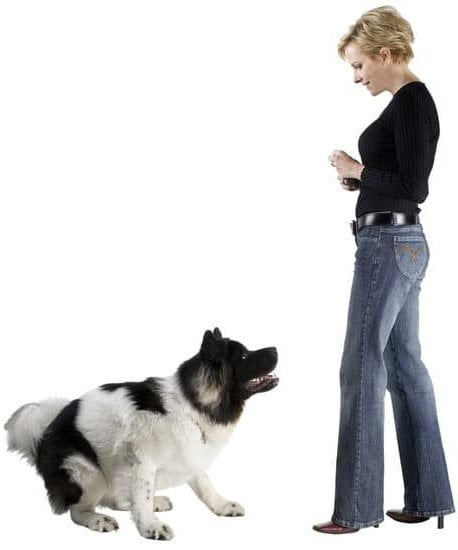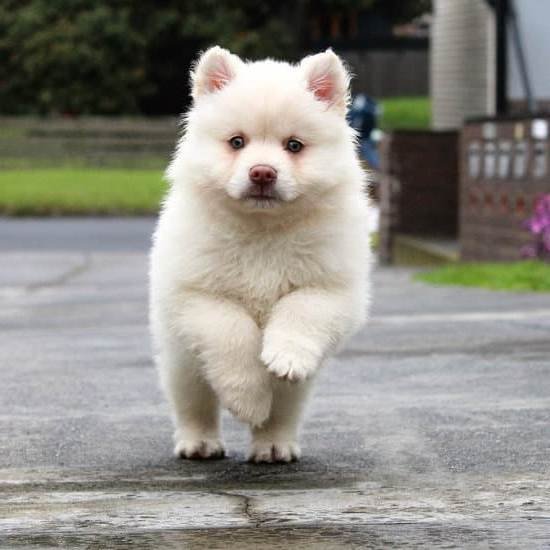Are you struggling with training your dog and finding it challenging to instill discipline and obedience? If so, a dog care training collar may be the solution to your woes. In this article, we will delve into the purpose and benefits of using a dog care training collar, providing you with a comprehensive guide on how to effectively use this tool to train your furry friend.
A dog care training collar is a device designed to assist in behavioral modification and training by providing gentle correction and reinforcement. With various types and features available on the market, it is crucial to understand how each type works and its specific benefits. In this article, we will explore the different types of dog care training collars, enabling you to choose the one that suits your dog’s needs best.
When it comes to selecting the right training collar for your dog, there are several factors to consider. Each dog has unique requirements, and understanding these factors will help you make an informed decision. We will provide you with an essential buying guide that highlights key considerations such as size, durability, correction methods, and more when choosing the perfect collar for your furry companion’s needs.
By familiarizing yourself with the components of a dog care training collar and understanding how it works, you can ensure optimal effectiveness during training sessions. In this article, we will break down each component of the collar and explain its function so that you can confidently use it while working with your dog. Stay tuned for our step-by-step guide on fitting and adjusting the training collar correctly for maximum results in our next section.
What is a Dog Care Training Collar
A Dog Care Training Collar is a tool that is used for training purposes to assist in teaching dogs proper behavior and obedience. These collars come in various types and offer different features to cater to the specific needs of each dog and their owners. Understanding the different types and features of training collars can help dog owners choose the most suitable one for their furry friends.
One type of dog training collar is the choke chain collar, also known as a slip collar. This type of collar consists of a metal chain with two rings at each end. The collar is placed around the dog’s neck, and when tension is applied on the leash, the collar tightens, creating discomfort or slight pain, urging the dog to stop a certain behavior. Choke chain collars should only be used by experienced handlers or under professional guidance.
Another common type of training collar is the prong/pinch collar. This collar consists of metal prongs that apply pressure on the dog’s neck when tension is applied on the leash. The prongs are designed to mimic a mother dog’s gentle bite on her puppy’s neck as a correction method. Prong collars should also be used with caution and under proper instruction to avoid causing harm or discomfort to the dog.
A more modern alternative to these traditional training collars is an electronic or shock collar. These collars use remote control devices that deliver mild electric shocks as a form of correction when paired with an undesired behavior. It’s important to note that shock collars should always be used responsibly and not as punishment but rather as a deterrent or interruption during training sessions.
When selecting a training collar for your dog, it’s essential to consider factors such as size, breed, temperament, and specific behavioral issues you wish to address. Additionally, it’s crucial to assess whether your canine companion would better respond to physical stimulation or auditory cues provided by vibration or sound signals in some advanced training collars available on the market.
By choosing the appropriate type and features of a dog care training collar, you can effectively address behavioral problems and enhance obedience in your furry friend.
Choosing the Right Training Collar for Your Dog’s Needs
When it comes to choosing a training collar for your dog, there are several factors to consider in order to find the right fit for your dog’s needs. Here is an important buying guide to help you navigate through the options available:
- Size and weight: It is crucial to ensure that you choose a training collar that fits your dog properly. Measure your dog’s neck size accurately and check the sizing guidelines provided by the manufacturer. An ill-fitting collar can be uncomfortable or ineffective.
- Type of training: Different dogs respond better to different training methods. Consider whether you want a collar that uses vibration, sound, or static stimulation. Some collars even offer multiple training modes. Think about what kind of training techniques would work best for your dog before making a purchase.
- Range and control: The range of the training collar determines how far away you can be from your dog while still maintaining control over them. If you plan on using the collar outdoors or during off-leash training, make sure to choose one with a sufficient range.
- Durability and water resistance: Dogs are naturally active and curious animals, so opting for a durable and water-resistant collar is important, especially if you plan on using it in various weather conditions or during outdoor activities such as swimming.
- Battery life and rechargeability: Consider how often you will need to charge or replace the batteries of the training collar. Longer battery life can be beneficial if you need extended periods of training time without interruptions.
Remember to always read reviews from other customers, consult with trainers or veterinarians, and consider any specific needs or preferences your dog may have before making a final decision on which training collar is right for them.
Once you’ve considered all these factors, you’ll be well-equipped with the knowledge needed to make an informed choice in selecting the training collar that suits your dog’s needs best. Remember, choosing the right training collar is an important step towards effective and successful dog training.
Familiarizing Yourself with the Components of a Dog Care Training Collar
A dog care training collar is a tool used to aid in training dogs and promote positive behavior. Before using a training collar, it’s important to familiarize yourself with its components and understand how it works. This section will provide an overview of the different parts of a dog care training collar and explain their functions.
- Receiver: The receiver is the part of the collar that is worn around the dog’s neck. It contains the electronic components that deliver the correction or stimulation to the dog when necessary. The receiver is usually waterproof and can be adjusted to fit comfortably on different sizes of dogs.
- Contact Points: The contact points are metal prongs located on the underside of the receiver. These prongs make direct contact with the dog’s skin and deliver the corrective stimulation, such as a static shock or vibration, when activated by the trainer.
- Transmitter: The transmitter is held by the trainer and used to send signals to the receiver on the dog’s collar. It usually has buttons or knobs that allow for easy control of settings, such as adjusting the level of stimulation or choosing between different modes.
- Stimulation Levels/Modes: Training collars often come with adjustable levels of stimulation or different modes to cater to individual dogs’ needs. Common modes include static shock, vibration, and beep tone. It’s important to choose a level or mode that is appropriate for your dog’s size, temperament, and sensitivity.
Understanding how each component works together will enable you to effectively use a dog care training collar during your training sessions. Always remember that proper usage, positive reinforcement, and consistency are key factors in achieving successful results when using a training collar.
| Component | Function |
|---|---|
| Receiver | Contains electronic components for delivering correction/stimulation |
| Contact Points | Metal prongs that make contact with the dog’s skin to deliver stimulation |
| Transmitter | Held by the trainer to send signals to the receiver via buttons or knobs |
| Stimulation Levels/Modes | Adjustable levels of stimulation or different modes for customization |
Step-by-Step Guide on Properly Fitting and Adjusting the Training Collar for Optimum Effectiveness
A dog care training collar is a valuable tool for effectively training and communicating with your dog. However, it is crucial to fit and adjust the collar properly to ensure its optimum effectiveness. By following a step-by-step guide, you can ensure that the collar fits comfortably on your dog and provides the desired results.
- Measure Your Dog’s Neck: Before purchasing a training collar, measure your dog’s neck size using a tape measure or a piece of string. Start at the base of the neck and wrap around where the collar would sit. This measurement will help you choose the right-sized collar.
- Choose the Correct Collar Type: There are different types of training collars available, such as pinch collars, e-collars (also known as electronic or shock collars), and head halters. Each type serves different purposes and has various levels of intensity. It is essential to choose the one that suits your dog’s needs and your training goals.
- Adjust the Collar Properly: Once you have chosen the right collar size, make sure it sits high on your dog’s neck, just behind their ears or under their jawline, depending on the type of collar. It should be snug enough that you can fit two fingers between the collar and your dog’s neck, but not too loose that it slips off easily.
Properly fitting and adjusting a training collar is crucial for effective communication with your dog during training sessions. A poorly fitted collar may not provide accurate feedback to your dog, leading to ineffective results or discomfort for your pet. Take the time to measure accurately and adjust the collar according to your dog’s comfort level to ensure optimum effectiveness.
| Step | Description |
|---|---|
| 1 | Measure Your Dog’s Neck |
| 2 | Choose the Correct Collar Type |
| 3 | Adjust the Collar Properly |
Getting Started with Training
Now that you have familiarized yourself with the purpose, features, and components of a dog care training collar, it’s time to start using it for training your dog. This section will provide a step-by-step guide on teaching basic commands and techniques using the training collar.
One of the first commands you should teach your dog is “sit.” This is a foundational command that can be easily taught using the training collar. Start by fitting and adjusting the collar according to the previous section’s instructions. Stand in front of your dog with treats in your hand, keeping them at their eye level.
Give the verbal command “sit” while gently pulling up on the leash attached to the training collar. As soon as your dog starts to sit, reward them with a treat and praise. Repeat this process several times until your dog consistently responds to the command.
Another important command to train your dog is “stay.” Begin by having your dog sit beside you. Hold their leash firmly in one hand and give them a clear verbal command to “stay.” With a gentle pull on the leash, take one step back while holding eye contact with your dog. If they stay in place without moving, reward them with praise or treats. Gradually increase both distance and duration as your dog becomes more comfortable staying in place.
Leash training is also crucial for effective communication between you and your dog during walks. Attach their leash to the training collar and hold onto it firmly. Start walking at a slow pace, giving them enough slack on the leash for movement but still maintaining control.
If they try to pull or go off-track, give a slight tug on the leash while saying “heel” or any other chosen command word for walking politely beside you. Release tension once they respond appropriately and reward them with praise or treats.
| Command/Technique | Description |
|---|---|
| Sit | A foundational command taught by gently pulling up on the leash while giving the verbal command “sit”. Reward with treats and praise when your dog responds appropriately. |
| Stay | Teach your dog to stay in place by gradually increasing distance and duration. Begin by taking a step back, maintaining eye contact, and rewarding them when they stay without moving. |
| Leash Training | Establish proper walking behavior by giving a slight tug on the leash and saying “heel” or any chosen command word when your dog pulls or goes off-track. Release tension and reward them when they walk politely beside you. |
Remember to be patient and consistent in your training sessions. Use positive reinforcement techniques such as treats, praise, and affection to motivate your dog and reinforce desired behaviors. It is important to avoid using excessive force or punishment with the training collar as this can cause fear or aggression in your dog. With time, practice, and a positive approach, you can effectively train your dog using a dog care training collar.
Tips for Effective Training
Training your dog with a dog care training collar can be extremely effective when done correctly. However, there are common mistakes that many dog owners make during the training process. By avoiding these mistakes and implementing best practices, you can increase the success rate of your training sessions.
Consistency is Key
Consistency is one of the most important aspects of effective training. Dogs thrive on routine and repetition, so it’s crucial to establish consistent rules and expectations for your furry friend. This includes using the training collar consistently and ensuring that everyone in the household follows the same guidelines.
It’s also essential to be consistent with your timing and rewards. If you wait too long to correct a behavior or reward good behavior inconsistently, your dog may become confused or lose motivation to learn. Consistency will help reinforce desired behaviors and make the training process more efficient.
Timing is Everything
Timing plays a significant role in using a dog care training collar effectively. It’s important to provide immediate feedback to your dog when using the collar to correct unwanted behaviors or reinforce good ones. Your dog needs to understand what specific action caused the correction or reward, so timing is critical.
Avoid correcting or rewarding your dog after they have already moved on from the behavior you’re addressing. For example, if your dog barks at something outside the window and you wait until they’ve finished barking before giving a correction, they won’t understand why they were corrected. Instead, give the correction as soon as they start barking to help them make that connection.
Properly Adjusting Intensity Levels
Another common mistake when using a dog care training collar is not adjusting the intensity levels properly for your individual dog’s needs. Every dog has different sensitivities, so it’s essential to find the right level that effectively communicates with them without causing harm or distress.
Start with the lowest intensity level and observe your dog’s response. If they respond appropriately to the correction, you’ve found the right level. However, if your dog doesn’t seem to notice or reacts negatively, you may need to increase the intensity gradually until you find a level that is effective but not too harsh.
Troubleshooting Guide
Common Challenges and Difficulties
Using a dog care training collar can be an effective and efficient way to train your dog, but it is not without its challenges. This section will address some common difficulties that you may encounter during training and provide tips for resolving them.
One common challenge that dog owners face when using a training collar is resistance or avoidance behavior from their dogs. Some dogs may initially resist or try to escape the stimulation of the collar, while others may try to chew or remove the collar altogether. It’s important to remember that these reactions are normal and can be overcome with patience and consistency.
Another challenge is finding the right level of stimulation for your dog. Every dog is unique, and what works for one may not work for another. It’s crucial to start at the lowest level of stimulation and gradually increase it until your dog responds appropriately. Pay close attention to your dog’s body language, vocalizations, and behavior to determine if the level of stimulation is too high or too low.
Troubleshooting Tips
To address resistance or avoidance behavior, it’s important to desensitize your dog to the training collar gradually. Start by introducing the collar in a positive and calm environment, associating it with rewards and treats. Allow your dog to sniff and explore the collar on their terms before putting it on them. If they show signs of anxiety or discomfort, take a step back in the process and give them more time to adjust.
If your dog tries to chew or remove the collar, you can consider using a different type of collar or adding an extra layer of protection such as adhesive bandages around the edges of the collar. Additionally, providing mental stimulation through interactive toys or puzzles can help redirect their attention away from the collar.
When it comes to finding the right level of stimulation, always start at the lowest setting and observe your dog’s reaction. Gradually increase the intensity only if necessary, and always use the lowest level that elicits a response from your dog. Remember to praise and reward your dog when they exhibit the desired behavior to reinforce positive associations with the training collar.
By addressing these common challenges and difficulties, you can ensure a smoother training experience with your dog care training collar. Remember that patience, consistency, and positive reinforcement are key to overcoming these obstacles and achieving successful results in your dog’s training journey.
Gradual Transition
Once your dog has successfully learned and internalized the commands and behaviors you’ve been teaching using the training collar, it’s time to start phasing out its usage. The objective is to help your dog generalize the desired behaviors in various situations without relying on the collar. This gradual transition will ensure that your canine companion remains well-trained and disciplined even without the physical stimulus of the collar.
Start by reducing reliance on the collar
Begin by progressively reducing the intensity of the stimulation or vibration provided by the training collar during obedience sessions. Introduce more verbal cues in combination with hand signals to prompt your dog’s response instead. Over time, aim to eliminate the need for any stimulations from the collar, relying solely on commands and positive reinforcement.
Increase distractions gradually
To test your dog’s ability to maintain disciplined behavior without the aid of a training collar, gradually introduce distractions during training exercises. Start with mild distractions such as low-level noise or slight movements, then progress to more challenging scenarios, such as being around other dogs or in busy environments. Reinforce desired behaviors using treats or praise consistently to ensure consistency and encourage self-control.
Transitioning indoors, outdoors, and off-leash
As your dog becomes proficient at following commands without the aid of a training collar indoors, slowly begin practicing outdoors where distractions are greater. Initially keep them on a leash and gradually increase their freedom off-leash once they consistently respond appropriately to commands in different outdoor settings.
Remember that every dog is unique, so be patient throughout this process as some dogs may need more time than others to fully adapt to life without a training collar. It’s important not to rush this transition in order to maintain disciplined behavior effectively.
Maintaining Disciplined Behavior:
Continue regular practice
To ensure that your dog continues to exhibit disciplined behavior, it’s crucial to maintain regular training sessions even after phasing out the training collar. Consistent reinforcement and practice of commands will help solidify their understanding and compliance.
Reinforce positive behaviors with rewards
Positive reinforcement remains an essential aspect of maintaining disciplined behavior. Use treats, praise, or playtime as rewards for your dog’s good behavior, reinforcing the idea that following commands leads to positive outcomes.
Be consistent with expectations
Consistency is key when it comes to maintaining disciplined behavior in your dog. Ensure that all family members are on the same page regarding training methods and command cues, as inconsistencies can confuse your furry friend.
By gradually transitioning away from the training collar while also employing various techniques to reinforce good behavior, you can ensure that your dog maintains a high level of discipline and obedience over time. This process requires patience, persistence, and ongoing effort, but the end result will be a well-trained canine companion who can confidently follow commands without any aid from a training collar.
Maintaining the Collar’s Condition
Proper cleaning and maintenance of your dog care training collar is essential to ensure its longevity and effectiveness. Regular maintenance not only keeps the collar looking clean but also ensures that it continues to work properly. Here are some tips for maintaining the collar’s condition:
- Cleaning the Collar: Start by removing any attachments or accessories, such as contact points or prongs, from the collar. Use a mild soap or detergent and warm water to clean the collar thoroughly. Gently scrub the surface with a soft cloth or sponge, paying special attention to any dirt or grime buildup. Rinse the collar with clean water and pat it dry with a towel before reattaching any accessories.
- Checking for Damage: Regularly inspect the collar for any signs of wear and tear or damage. Look out for frayed edges, loose stitches, or cracks in plastic components. If you notice any damage, it is important to repair or replace the affected parts immediately to avoid any safety hazards.
- Battery Maintenance: If your training collar is battery-operated, make sure to check and replace the batteries regularly according to the manufacturer’s instructions. This will help maintain consistent performance and prevent any malfunctioning issues during training sessions.
- Proper Storage: When not in use, store your dog care training collar in a safe place away from extreme temperatures, moisture, and direct sunlight. This will help prevent damage caused by exposure to harsh environmental conditions.
By following these cleaning and maintenance tips, you can ensure that your dog care training collar remains in top condition and continues to provide effective results during training sessions. Remember to refer to the manufacturer’s instructions for specific guidelines on cleaning and maintaining your particular model of training collar.
Key Points
- Clean the collar regularly using mild soap or detergent and warm water.
- Check for any signs of damage like frayed edges or cracks.
- Replace batteries according to manufacturer’s instructions.
- Store the collar in a safe place away from extreme temperatures and moisture.
Conclusion
In conclusion, utilizing a dog care training collar can be an invaluable tool in training and disciplining your furry friend. This article has explored the purpose and benefits of using a dog care training collar, as well as the different types and features available on the market. It has also provided a comprehensive buying guide to help you choose the right training collar for your dog’s needs.
Familiarizing yourself with the components of a dog care training collar and understanding how it works is crucial for its optimum effectiveness. This article has provided a step-by-step guide on fitting and adjusting the training collar properly. It has also highlighted basic commands and techniques that you can start teaching your dog using the training collar.
To ensure successful training, it is important to avoid common mistakes and follow best practices. The tips for effective training mentioned in this article can significantly increase your success rate. Additionally, the troubleshooting guide provides solutions to address challenges and difficulties encountered during training with the collar.
Lastly, as your dog progresses in their training journey, it is essential to gradually transition away from relying solely on the training collar. Maintaining disciplined behavior requires consistency and reinforcement even after phasing out the collar. Proper cleaning and maintenance of the collar will ensure its longevity.
Overall, using a dog care training collar can lead to positive results by promoting obedience, safety, and proper behavior in your beloved pet. By following this comprehensive guide, you are equipped with the knowledge and tools necessary to train your four-legged companion effectively.
Frequently Asked Questions
How do you use a dog training collar effectively?
Using a dog training collar effectively requires proper understanding and implementation. Firstly, it is crucial to choose the right type of collar suitable for your dog’s size, breed, and temperament. Before putting the collar on your dog, ensure that you have read and understood the instructions provided by the manufacturer. Start by introducing the collar gradually to avoid overwhelming your dog.
Begin with low-intensity levels and gradually increase as necessary while monitoring your dog’s response closely. Never leave the collar on for extended periods or use it as a punishment tool; instead, focus on positive reinforcement techniques alongside collar usage to encourage desired behaviors. Consistency and patience are key in ensuring effective training through a dog training collar.
How do you adjust the shock level on a dog care shock collar?
Adjusting the shock level on a Dog Care shock collar requires careful attention to your individual dog’s needs and responses. Most shock collars have buttons or dials enabling adjustment of intensity levels according to different dogs’ sensitivity or behavior requirements. Before making any adjustments, it is essential to familiarize yourself with the specific instructions provided by the manufacturer for your particular model of shock collar.
Start at the lowest possible setting and observe how your dog reacts during training sessions. Gradually increase or decrease the intensity based on their response, always being mindful not to cause unnecessary pain or distress. It is crucial to strike a balance between providing an effective stimulus while still maintaining your pet’s well-being.
Why is my dog care shock collar not shocking?
If your Dog Care shock collar is not shocking, there could be several potential reasons for this issue. Firstly, check whether all components of the collar are tightly connected and functioning correctly – including batteries, electrodes, contacts, and receiver unit connections – as any loose parts can disrupt its functionality. Additionally, verify that the shock collar is properly fitted around your dog’s neck as incorrect placement may hinder its effectiveness.
Another possibility is that you may have unintentionally turned off the electric module or deactivated the specific function for delivering shocks if applicable in your model. Lastly, consult the user manual or contact customer support for troubleshooting guidance if none of the mentioned reasons seem to resolve the issue. It’s crucial to understand that shock collars should always be used as a training aid and not relied upon as the sole method of teaching your dog appropriate behavior.

Welcome to the blog! I am a professional dog trainer and have been working with dogs for many years. In this blog, I will be discussing various topics related to dog training, including tips, tricks, and advice. I hope you find this information helpful and informative. Thanks for reading!





